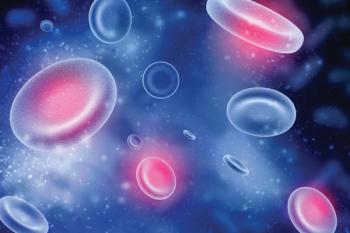
Miami Breast Cancer Conference® Abstracts Supplement
- 42nd Annual Miami Breast Cancer Conference® - Abstracts
- Volume 39
- Issue 4
- Pages: 9-10
15 Utilizing Circulating Tumor Cells to Guide HER2-Directed Therapy in IHC/FISH-Negative HER2+ Metastatic Breast Cancer
Background
The diagnosis of HER2-positive metastatic breast cancer (MBC) is complicated by tumor heterogeneity and temporal changes in HER2 expression. Circulating tumor cells (CTCs) serve as valuable noninvasive markers for HER2 expression when pathologic confirmation is infeasible, offering a potential therapeutic target in an otherwise high-risk population. We present a series of patients with HER2-negative MBC by immunohistochemistry (IHC)/ fluorescence in situ hybridization (FISH) who received adjunctive HER2-directed therapy following the detection of HER2-positive CTCs.
Materials and Methods
116 patients with HER2-positive MBC by IHC/FISH and/or HER2-positive CTCs, enrolled between 2016 and 2024 under Institutional Review Board-approved trial NU16B06 at Northwestern Medicine, were retrospectively analyzed. CTC enumerations were performed via CELLTRACKS (Menarini).
Results
Seven patients with prior HER2-negative MBC by IHC/FISH initiated HER2-directed therapy at metastatic diagnosis based on HER2-positive CTCs. Median age at metastatic diagnosis was 63 years (range, 38-68). In addition to chemotherapy, all patients received initial HER2-directed therapy with trastuzumab, which was well tolerated. The median primary CTC count was 34 (5-1143), with a median of 17 HER2-positive CTCs (5-376). Median progression-free survival was 5.2 months (0.67–13.3), and the median overall survival was 38.9 months (9.5-61.7). Among 5 patients with reported secondary CTC counts, 2 cleared HER2-positive CTCs, 1 demonstrated a decrease, and 2 exhibited an increase in HER2+ CTCs. All patients experienced progressive metastatic disease. Four patients underwent subsequent biopsies during their disease course: 2 were HER2-negative by IHC/FISH, and 2 were found to have HER2-low disease. Five patients received further HER2-directed therapy, including tucatinib, trastuzumab emtansine, and trastuzumab deruxtecan.
Conclusion
While IHC/FISH remains the standard for HER2 detection, CTCs provide a complementary metric to guide HER2-directed therapy in HER2-negative MBC by IHC/FISH. Dynamic changes in HER2+ CTCs highlight their utility as predictive biomarkers for therapeutic response and indicators of disease progression. Evidence of subsequent HER2-low disease in some patients underscores the evolving nature of HER2 expression. This limited series demonstrates that noninvasive CTC monitoring may offer a potential approach to address tumor heterogeneity and guide real-time therapeutic adjustments. Prospective studies are needed to optimize patient selection for CTC-guided HER2 therapies and validate their role in improving outcomes in MBC.
Articles in this issue
Newsletter
Stay up to date on recent advances in the multidisciplinary approach to cancer.



















































































